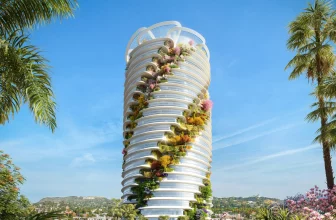Architectural Association Visiting School
In an article by Wired Magazine in 2012, an expanded outlook of the future of additive manufacturing indicated that there is research conducted by industrial engineers at Airbus towards 3D-printing by 2050 of a “self-cleaning aircraft with inbuilt neural networks, antioxidant enriched air and body heat harvesting facilities”. Concurrently, there are steps being made towards the assimilation of 3D-printing in aerospace, namely in recent instances like the launching by the European Space Agency (ESA) in 2013, of a program termed “Addictive Manufacturing Aiming towards Zero Waste and Efficient Production of High-Tech Metal Products”[1]. The aim is to send in space by 2020 the first satellite printed as a single part, which is something that “would save 50 percent of the costs – [that equates to] millions of euros”1.
When describing their research programme, ESA scientists also pointed out that “in the world of materials it’s the mixing of […] different chemical elements that is vital […]: we hardly use pure metals but we do use compounds, alloys and composites; the actual number of combinations and ratios of mixing elements is infinite”[2]. Being “closer to alchemy than architectural tectonics […] multi-materiality is the holy grail of materials scientists”[3], while in architecture initial research in the field of multi-material design is only beginning to become evident, albeit in a dispersed manner.
The Visiting School will build upon the Future Matters symposium that was held at the AA in February 2015 and will be the first of its kind centered on a biennial exploration of a different multi-material, rather than being based on a fixed location. The scope will be to instigate a new alchemy for the 21st century, moving away from explorations of single, isotropic or composite materials and towards a completely new field of investigation dealing with material mixtures and grading. The aim will effectively be to discover new types of graded materials mixes through which we can begin to question tired ideas of tectonics, messy building processes, energy, resource and material wastage and the minimal aesthetics of sharp boundaries and uniformity.

(Image: A functionally graded concrete sample. Image by Michael Herrmann: Gradientenbeton Untersuchungen zur Gewichtsoptimierung Einachsiger Biege- und Querkraftbeanspruchter Bauteile, Dissertation, Institut für Leichtbau Entwerfen und Konstruieren: Universität Stuttgart, 2015.)
For the first cycle of this exploration we will be based at the Institute of Lightweight Structures and Conceptual Design (ILEK) and the office of str.ucture GmbH Engineering in Stuttgart, where we will attempt to stretch the possibilities of what can be mixed with concrete. We will be utilizing the concrete spraying robot at ILEK and effectively building individual small scale prototypes in graded concrete. Intensive digital material simulations will be made alongside physical material prototyping and towards designing the prototypes.

(Image: the concrete spraying facilities at the Institute for Institute of Lightweight Structures and Conceptual Design)
Prominent Features of the workshop/ skills developed:
- Teaching team consisting of AA Diploma tutors and Institute of Lightweight Structures and Conceptual Design/str.ucture GmbH engineers.
- Access to the studio spaces and workshop facilities of ILEK and str.ucture GmbH Structural Design Engineering + access to the Institute’s concrete spraying robot for graded concrete manufacturing.
- Computational skills tuition on Grasshopper/Karamba structural analysis + multi-material design and simulation.
- Fabrication of small to medium scale functionally graded concrete prototypes.
- Lectures series by academics and practitioners in the fields of architecture and engineering.
Eligibility:
The workshop is open to current architecture and design students, PhD candidates and young professionals. Software Requirements: Rhino (SR7 or later), RealFlow 2015.
Accreditation:
Participants receive the AA Visiting School Certificate with the completion of the Programme.
Discount options are available. Please contact the AA Mixed Matters- Concrete Visiting School for more details.
More info can be found here: http://www.aaschool.ac.uk/STUDY/VISITING/stuttgart
Apply here: https://www.aaschool.ac.uk/STUDY/ONLINEAPPLICATION/visitingApplication.php?schoolID=414
[1] RT (2013) AMAZE: Europe’s ambitious aim to 3D print a single-piece satellite. http://rt.com/news/3d-print-satellite-metal-esa-232/ Accessed 02 Sep 2014 [2] ESA (2014) Europe’s new age of metals begins. http://www.esa.int/Our_Activities/Technology/Europe_s_new_age_of_metals_begins Accessed 15 Sep 2014[3] Wiscombe T (2012) Beyond assemblies: system convergence and multi-materiality. Bioinspiration & Biomimetics 7(1):015001.





